|
Fresh off the Flying Aces
magazine press (in 1934) is this article and plans for a rubber-powered free
flight Stinson Reliant model. The 26-inch wingspan craft drawn and built by
author Avrum Zier is of customary construction with balsa sticks and Jap
tissue covering. A carved cowl and wheel pants, and paper landing gear
fairings make for a very nice look. There five plans sheets that can be
scaled up or down to suit your needs. Send me an e-mail if you need higher
resolution plans files.
Here's the Stinson Reliant! Article & Plans
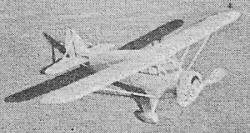 One of the finest commercial ships on the
market today is our model this month-the Stinson Reliant. Use the plans presented
here, and you'll have a fine 26-inch flying scale model of this popular modern ship. One of the finest commercial ships on the
market today is our model this month-the Stinson Reliant. Use the plans presented
here, and you'll have a fine 26-inch flying scale model of this popular modern ship.
By Avrum Zier
This month Flying Aces presents plans for a flying replica model of the Stinson
Reliant, one of the finest commercial ships on the market today. Although this ship
has been on the market for only a short time, it has already captured the fancy
of most model builders, and it is for this reason that we publish full-size plans
to build a 26-inch flying model.
The Stinson Reliant is powered with a Lycoming motor, developing 215 H.P. The
ship is the latest word in commercial designing, and affords the maximum comfort
with its latest developments.
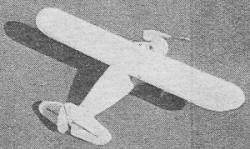 Performance Performance
Rate of climb ......................... 750 feet per minute
Service ceiling ....................... 14,500 feet
Cruising speed ...................... 115 M.P.H.
High speed ............................ 135 M.P.H.
Specifications
Span ..................................... 43 feet 3Vs inches
Length overall ...................... 27 feet
Height overall ....................... 8 feet 5% inches
Gas capacity ......................... 50 gallons
Gross weight ........................ 3160 lbs,
Fuselage
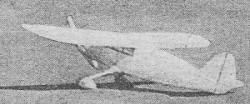 The fuselage of the Reliant is constructed
in the manner used in any flat-sided body. First, construct two sides, using the
shaded portion of the side view as a jig. The next step is to glue all the cross
braces in their place, as shown. The cross brace on Former 5 does not form right
angles with the side brace, but is placed farther back, so that the trailing edge
of the wing rests up against it. The diagonals are 1/32" x 1/16". The fuselage of the Reliant is constructed
in the manner used in any flat-sided body. First, construct two sides, using the
shaded portion of the side view as a jig. The next step is to glue all the cross
braces in their place, as shown. The cross brace on Former 5 does not form right
angles with the side brace, but is placed farther back, so that the trailing edge
of the wing rests up against it. The diagonals are 1/32" x 1/16".
I want to call special attention to the construction of the real of the body.
The horizontal brace which you see is deflected about one degree off the horizontal,
in order to give the stabilizer a negative angle. However, if the model builder
wishes, he may make the stabilizer adjustable by attaching it to the brace at one
point only - the end of horizontal brace. In this case, the stabilizer may be raised
by placing small pieces of balsa wood under the leading edge.
After the complete frame is assembled, the Formers are cut out of 1/16" sheet
as shown, and glued in place. Glue Formers 2, 3, and 4 to the body, using the front
rectangular part of the frame as two stringers. Former 1 is glued to Former 2 so
that the cowl is able to slide on. The front window frame is not constructed until
the wing has been glued in place. Please note that Brace 8 is separated by a complete
former, with a slot cut out to hold the motor stick. Next come the wings.
Wings
The wings are constructed entirely of balsa. The wing tip is cut from three pieces
that have their grains running in opposite directions to the shape of the tip. It
is then glued to the wing and sanded to a taper leading into the trailing edge.
The wings are placed on the body so that they form an angle of incidence of one
degree, and a dihedral of one degree. The stringers from Former 5 are projected
to meet the top of the wing after the wing has been set properly. The frame is then
covered, thus making the wing appear as if it were filleted into the body. The struts
are glued to the frame and not to the covering, as I have so often seen. If the
strut is glued to the paper, they are apt to break away from the plane.
Tail Surfaces
The tail surfaces are constructed with a double camber, and contain a balsa spar,
which passes through the center, as shown. The stabilizer is constructed in one
piece. It is placed on the body by cutting away part of the rear post of the body,
and inserted so that it rests upon the horizontal brace, as explained.
The rudder is built in the same way as the stabilizer, and must be placed on
after the stabilizer. To counteract the torque, the rudder should be twisted, or
placed off center.
Landing Gear
The landing gear is made entirely of balsa and consists of three pieces. The
part entering the body is a fillet, and should be made to fit the curve of the body
at that point. Should the fillet not fit neatly into the body, the builder should
cover the seam with paper.
The pants may be made in one or two pieces, as shown. In both cases, they should
be hollowed out to the maximum. A one-inch wheel is inserted to revolve freely.
After the model has been completed, the builder should glide the model to determine
if the model is properly balanced. If the model tends to nose over, place a weight
in the tail. If the model stalls, place the weight in the nose.
Well, fellows, go to it, and lots of luck. If you are in doubt over any part,
I will gladly help you out if you send me a self-addressed, stamped envelope stating
your trouble. Happy landings until next month!
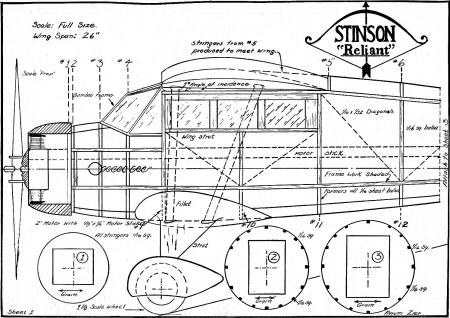
Free Flight Stinson Reliant Plans (sheet 1)
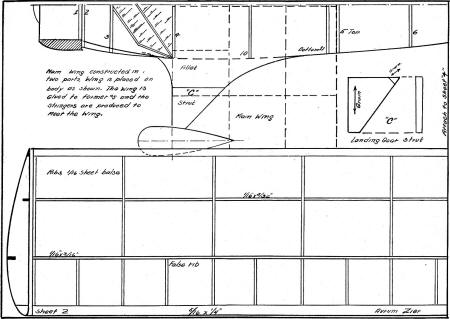
Free Flight Stinson Reliant Plans (sheet 2)
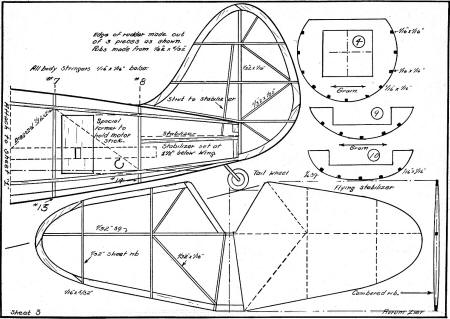
Free Flight Stinson Reliant Plans (sheet 3)
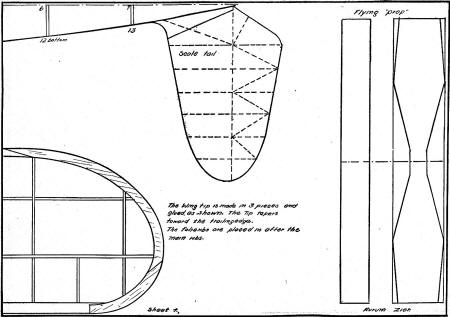
Free Flight Stinson Reliant Plans (sheet 4)
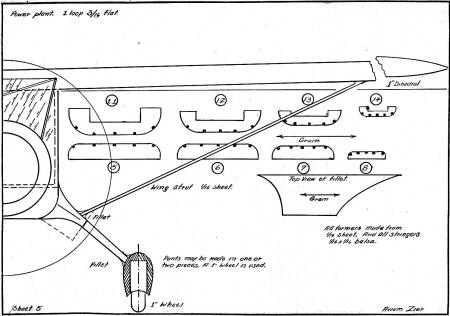
Free Flight Stinson Reliant Plans (sheet 5)
Notice:
The AMA Plans Service offers a
full-size version of many of the plans show here at a very reasonable cost. They
will scale the plans any size for you. It is always best to buy printed plans because
my scanner versions often have distortions that can cause parts to fit poorly. Purchasing
plans also help to support the operation of the
Academy of Model Aeronautics - the #1
advocate for model aviation throughout the world. If the AMA no longer has this
plan on file, I will be glad to send you my higher resolution version.
Try my Scale Calculator for
Model Airplane Plans.
Posted June 19, 2021
|



